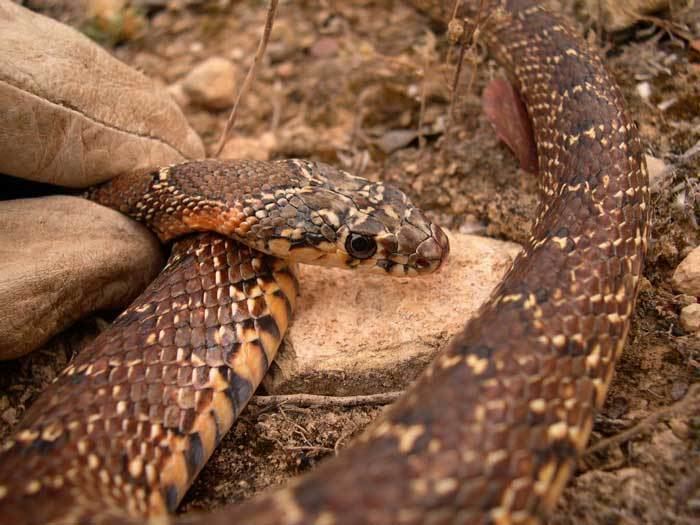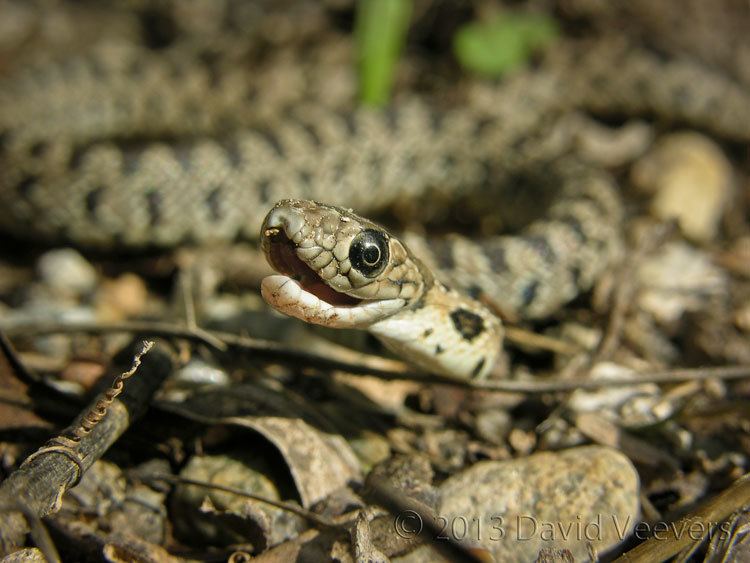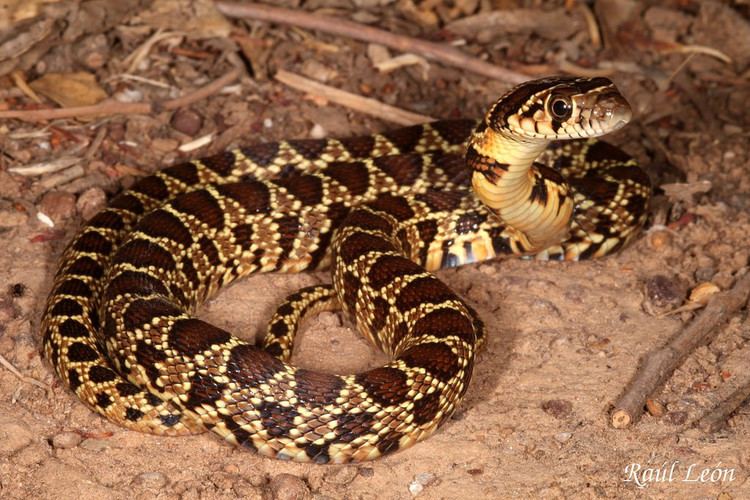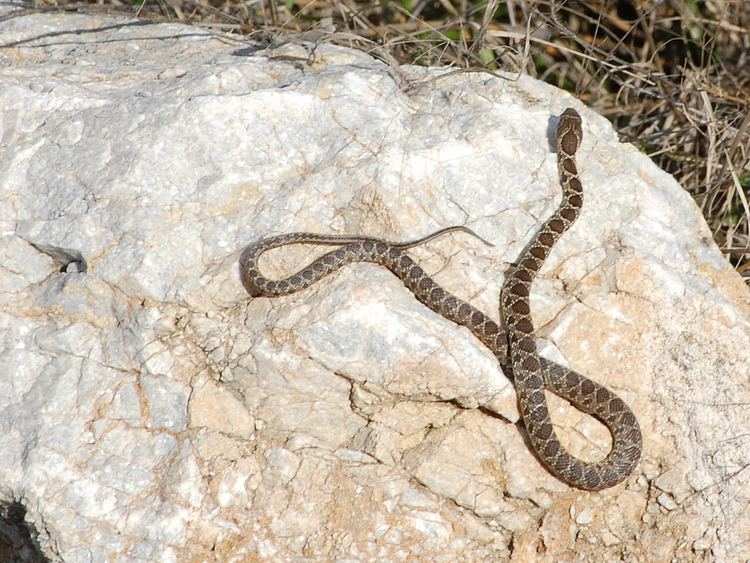Suborder Serpentes Subfamily Colubrinae Higher classification Hemorrhois Order Scaled reptiles | Subphylum Vertebrata Genus Hemorrhois Phylum Chordata Rank Species | |
 | ||
Similar Hemorrhois, Snake, Reptile, Ladder snake, Colubridae | ||
The horseshoe whip snake (Hemorrhois hippocrepis) is a species of snake in the Colubridae family. It is native to southwestern Europe and northern Africa.
Contents

Horseshoe whip snake
Description

Adults may attain a total length of 1.5 m (5 feet). Its body is slender, and its head is wider than its neck. The eye is large, with a round pupil, and with a row of small scales below it. The smooth dorsal scales are arranged in 25-29 rows, and the ventrals number 220-258. Dorsally it has a series of large spots which are either blackish or dark brown edged with black. There are a series of alternating smaller dark spots on the sides. The lighter ground color between the spots may be yellowish, olive, or reddish. The dark spots are closely spaced, giving the appearance of a dark snake with a light pattern resembling a chain or a series of X's. There is a light horseshoe-shaped mark on the neck and back of head.
Distribution and habitat

It is found in Algeria, Morocco and Tunisia in North Africa, and in southern and central Portugal, southern, eastern and central Spain, Gibraltar, southern Sardinia and Pantelleria Island in Europe. In the island locations, it may have been introduced. Its natural habitats are Mediterranean-type shrubby vegetation, rocky areas, rocky shores, sandy shores, arable land, pastureland, plantations, rural gardens, and urban areas.
Conservation status
The horseshoe whip snake is assessed as being of "Least Concern" by the International Union for Conservation of Nature in its Red List of Threatened Species. Its population trend is thought tp be steady, it is able to adapt to modified habitats. Threats it faces include being run over by traffic, poisoned by agricultural chemicals and being captured for use by local snake charmers.

